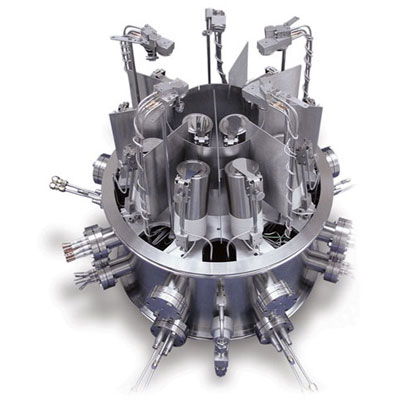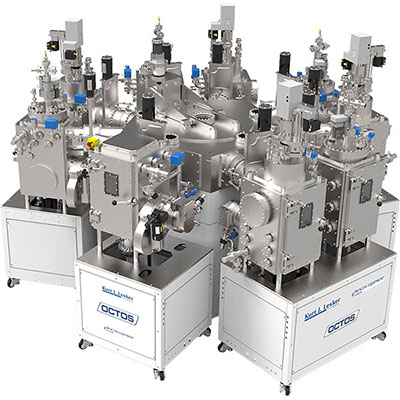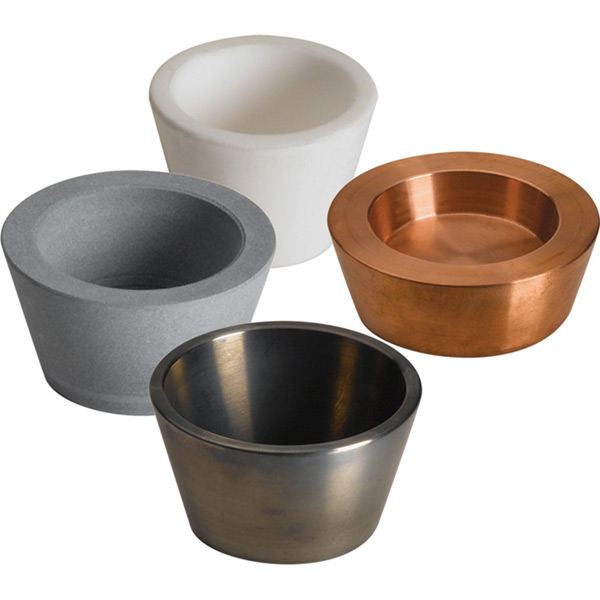Molybdenum Oxide (MoO3) Pellets Evaporation Materials
Molybdenum Oxide (MoO3) Pellets Overview
We sell these pellets and pieces by unit weight for evaporation use in deposition processes. These approximate materials prices are published to provide budgetary guidelines. Actual prices can vary and may be higher or lower, as determined by availability and market fluctuations. To speak to someone directly about current pricing, please click here .
Molybdenum Oxide (MoO3) General Information
Molybdenum oxide is a chemical compound with a chemical formula of MoO3. It is white to pale yellow in color with a melting point of 795°C, a density of 4.69 g/cc, and a vapor pressure of 10-4 Torr at ~900°C. It is primarily used to manufacture pure molybdenum metal. It is evaporated under vacuum to make transparent electrodes for photovoltaic cells.
Molybdenum Oxide (MoO3) Specifications
| Material Type | Molybdenum Oxide |
| Symbol | MoO3 |
| Color/Appearance | White to Pale Yellow, Crystalline Solid |
| Melting Point (°C) | 795 |
| Theoretical Density (g/cc) | 4.69 |
| Z Ratio | **1.00 |
| Thermal Evaporation Techniques |
Boat: Mo Basket: Mo Crucible: Al2O3, BN |
| Temp. (°C) for Given Vap. Press. (Torr) | 10-4: ~900 |
| Comments | Slight oxygen loss. |
| Suggested QCM Crystal | Alloy Crystal: 750-1002-G10**** |
** The z-ratio is unknown. Therefore, we recommend using 1.00 or an experimentally determined value. Please click here for instructions on how to determine this value.
**** Suggestion based on previous experience but could vary by process. Contact local KJLC Sales Manager for further information
Empirical Determination of Z-Factor
Unfortunately, Z Factor and Shear Modulus are not readily available for many materials. In this case, the Z-Factor can also be determined empirically using the following method:
- Deposit material until Crystal Life is near 50%, or near the end of life, whichever is sooner.
- Place a new substrate adjacent to the used quartz sensor.
- Set QCM Density to the calibrated value; Tooling to 100%
- Zero thickness
- Deposit approximately 1000 to 5000 A of material on the substrate.
- Use a profilometer or interferometer to measure the actual substrate film thickness.
- Adjust the Z Factor of the instrument until the correct thickness reading is shown.
Another alternative is to change crystals frequently and ignore the error. The graph below shows the % Error in Rate/Thickness from using the wrong Z Factor. For a crystal with 90% life, the error is negligible for even large errors in the programmed versus actual Z Factor.

Thermal Evaporation of Molybdenum Oxide (MoO3)
Molybdenum oxide has a vapor pressure of 10-4 Torr at ~900°C. It will have a slight O2 loss during evaporation so supplemental oxygen may be necessary. We recommend evaporating without oxygen first in order to get a baseline and then adjusting the oxygen level as necessary.
Molybdenum oxide can be thermally evaporated with a molybdenum boat. We would recommend our EVS8B005MO or EVS20A010MO if using a KJLC© system.
E-beam Evaporation of Molybdenum Oxide (MoO3)
Molybdenum oxide has a vapor pressure of 10-4 Torr at ~900°C. It will have a slight O2 loss during evaporation so supplemental oxygen may be necessary. We recommend evaporating without oxygen first in order to get a baseline and then adjusting the oxygen level as necessary.
We have not yet qualified a suitable crucible liner material for e-beam evaporating molybdenum oxide, so we would recommend starting with a FABMATE® liner since it is compatible with most materials.
A key process note is to consider the fill volume in the e-beam application because we find that the melt level of a material in the crucible directly affects the success of the crucible liner. Overfilling the crucible will cause the material to spill over and create an electrical short between the liner and the hearth. The outcome is cracking in the crucible. This is the most common cause of crucible liner failure. Placing too little material in the crucible or evaporating too much material before refilling can be detrimental to the process as well. When the melt level is below 30%, the e-beam is likely to strike the bottom or walls of the crucible which immediately results in breakage. Our recommendation is to fill the crucible between 2/3 and 3/4 full to prevent these difficulties.
Crucible liners should be stored in a cool, dry place and always handled with gloves or forceps.
See highlighted results that match your result in the table below.
Ordering Table
| More Info | Material | Description | Size | Quantity | Purity | Part Number | Price | In Stock | Add To Cart |
|---|---|---|---|---|---|---|---|---|---|
| More Info | Material | Description | Size | Quantity | Purity | Part Number | Price | In Stock | Add To Cart |
| Molybdenum Oxide |
MOLYBDENUM OXIDE PIECES, |
3MM - 6MM Pieces | 25g | 99.95% | EVMMOO3-6MMA | P.O.R. |
|
||
| Molybdenum Oxide |
MOLYBDENUM OXIDE PIECES, |
3MM - 6MM Pieces | 50g | 99.95% | EVMMOO3-6MMB | P.O.R. |
|
||
| Molybdenum Oxide |
MOLYBDENUM OXIDE PIECES, |
3MM - 6MM Pieces | 100g | 99.95% | EVMMOO3-6MMD | P.O.R. |
|
||
| Molybdenum Oxide |
MOLYBDENUM OXIDE PIECES, |
3MM - 6MM Pieces | 200g | 99.95% | EVMMOO3-6MMH | P.O.R. |
|
||
| Molybdenum Oxide |
MOLYBDENUM OXIDE PIECES, |
3MM - 6MM Pieces | 500 g | 99.95% | EVMMOO3-6MMT | P.O.R. |
|







